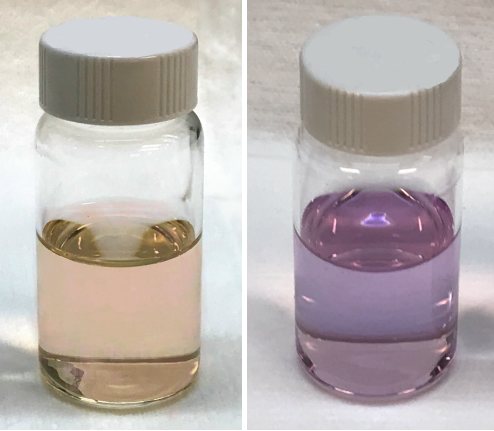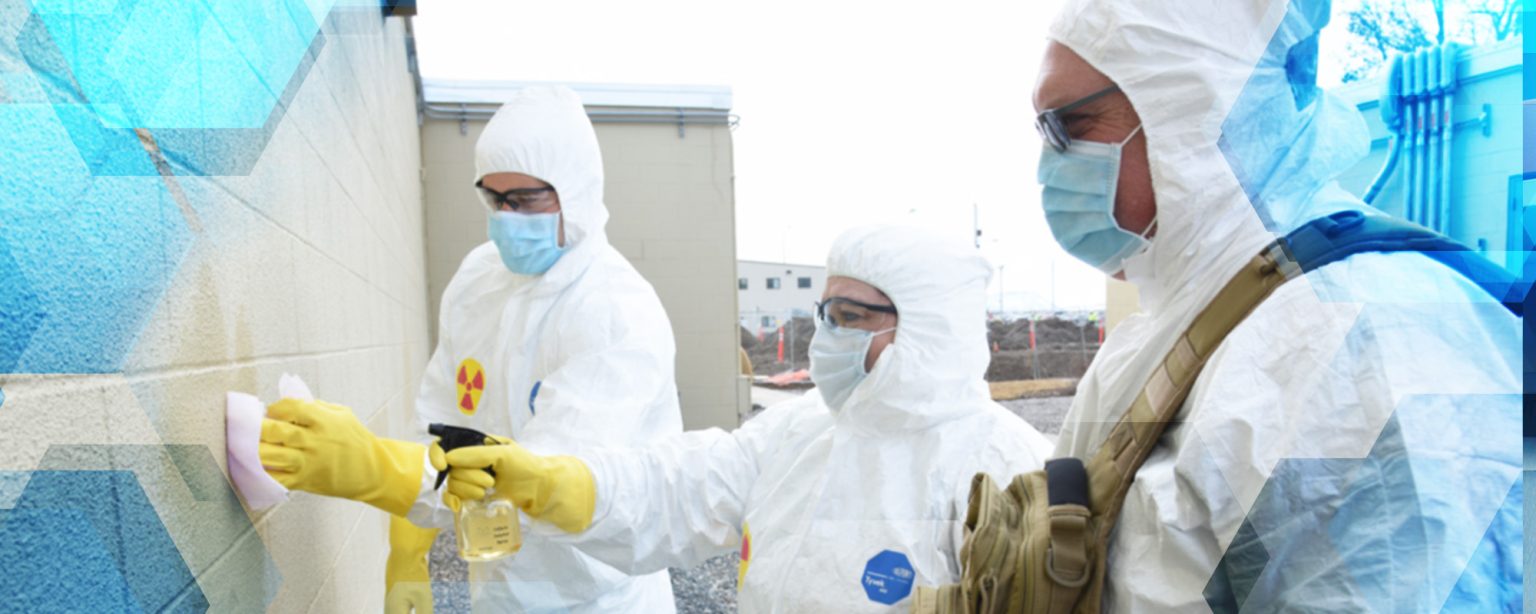The marketplace debut of Idaho National Laboratory’s Colorimetric Detection of Actinides, or CoDeAc, isn’t the finish to the award-winning technology’s story. According to its inventors and now investors, it’s just the beginning of a new chapter.
“CoDeAc has a bright future,” INL Researcher and CoDeAc inventor Catherine Riddle said. “As it gains interest and expands, there will be new opportunities for future colorimetric detection products and a diverse range of new technologies geared towards rapid radionuclide detection.”
Origins of CoDeAc
Riddle, along with fellow INL researcher Rick Demmer, started developing CoDeAc in 2019 to help first responders, radiation specialists and nuclear operators detect uranium and plutonium when responding to an emergency nuclear event.

Prior detection tools available in the marketplace screened beta-, gamma- and neutron-emitting radionuclides. But Riddle said those tools lacked CoDeAc’s sensitivity and adaptability to detect alpha-emitting radiological species like uranium and plutonium, particularly in environmental background situations.
The technology’s ease and use of rapid color detection – purple for uranium and pink for plutonium –makes this tool shine above others. Riddle and Demmer developed the solution to change color within a minute when sprayed or wiped on to a variety of surfaces to detect possible nuclear contamination.
Click here for more information on CoDeAc.
From Tabletop to Marketplace
CoDeAc, a 2020 R&D 100 Award winner, attracted the interest of industry because of its low cost, environmentally friendly and rapid detection capabilities. Among those interested parties was Chicago-based Innovyz USA.
According to its website, Innovyz USA specializes in commercializing advanced materials that solve fundamental challenges impacting the world. The company combines the functionality of an accelerator, incubator, venture capitalist and management consultancy to help innovations thrive in the marketplace.

“With CoDeAc, we saw a delightfully novel solution to a hard problem with multiple application areas and paths to commercialization,” Innovyz USA General Manager Scott Nuzum said. “We also saw a product developed by world-class innovators backed by a world-class institution.
“The caliber of work coming out of INL is extremely high, so that also gives us great confidence that we can build a world changing company,” he said.
Innovyz USA licensed the technology and created the start-up company CoDeAc Solutions to sell it for commercial use. The company’s site advertises a uranium detection kit, which includes 30 milliliters of solution and materials for 12 detection tests, for $210.
According to Nuzum, CoDeAc Solutions is marketing to a variety of sectors, including military, security and civilian organizations. Nuzum said the product interests these organizations given current geopolitical trends and the role nuclear energy plays as a key component in global efforts for decarbonization. One of those future customers could be the Transportation Security Administration, which could use it for screening at airports and on airplanes.

“We believe that CoDeAc can solve multiple challenges across use cases and sectors – and not just in the security and defense sectors,” Nuzum said. “We see promising applications for the mining and energy sectors as well, as we believe it could be a useful tool for aerospace companies seeking to create next-generation propulsion systems. Above all, we see a future that is enhanced by the existence of CoDeAc.”
INL Director of Technology Deployment Jason Stolworthy said CoDeAc highlights the impact INL technologies have in addressing real-world problems. It also draws attention to the need for ensuring these technologies reach the marketplace.
“CoDeAc is a great success story of a collaboration between the Department of Energy and INL technology transfer efforts, “ Stolworthy said. “INL has over 400 active licenses with companies and organizations that are using and commercializing INL innovations. The breadth of INL’s impact is inspiring.”
CoDeAc’s Future
CoDeAc’s development is ongoing, Riddle said. Work is moving forward on a solution that would detect bodily contamination, which can be a game-changer for first responders and the general public dealing with contamination caused by conventional explosives dispersing radioactive material.
Current internal contamination detection is a lengthy process. It requires collecting and drying a large volume sample from an individual, and then using conventional detection methods that take up to four hours per sample.
“If you have potentially a hundred first responders and tens of thousands of people in the area to test, you are looking at months of testing even with numerous detectors running 24/7,” Riddle said. “Using CoDeAc, the sampling would be similar to how a pregnancy test works and the results for uranium and plutonium would give a positive or negative result in under a minute.”





